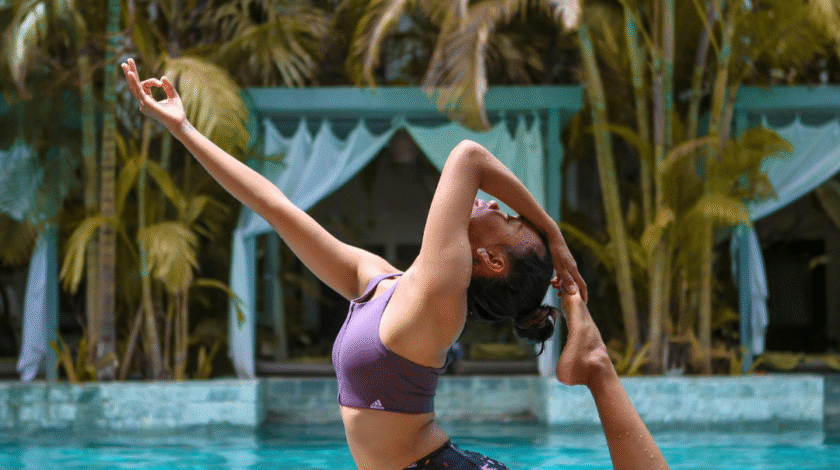Maintaining fitness habits can significantly enhance one’s longevity and overall health. Regular physical activity contributes to a stronger cardiovascular system, better muscle tone, and improved mental health. Adopting a balanced exercise regimen that includes strength training, aerobic activities, and flexibility exercises can greatly support a longer, healthier life.
Incorporating activities like walking, cycling, or swimming into daily life helps to manage weight and reduce the risk of chronic diseases. Nutrition also plays a key role alongside fitness; a balanced diet rich in whole foods fuels the body and complements any exercise routine. By making consistent choices to prioritize fitness and health, individuals can pave the way for a more vibrant and extended life.
Combining fitness with other healthy lifestyle choices, such as adequate sleep and stress management, creates a holistic approach to longevity. Small, sustainable changes can lead to significant improvements in well-being over time. Emphasizing the connection between fitness and longevity not only motivates individuals to stay active but also underscores the benefits of investing in one’s health daily.
Foundational Fitness Habits for Longevity
Adopting foundational fitness habits is essential for promoting longevity. These habits not only improve health but also enhance well-being and enjoyment of life. Key practices include consistent physical activity, daily walking routines, and prioritizing joy and enjoyment in movement.
Consistent Physical Activity
Engaging in consistent physical activity is crucial for maintaining health over the long term. Recommendations suggest at least 150 minutes of moderate aerobic activity each week. This can include activities such as cycling, swimming, or group fitness classes.
Strength training is also important, enhancing muscle mass and bone density. Incorporating resistance exercises twice a week can significantly impact strength and mobility. In addition, varying the types of exercise helps prevent boredom and reduces the risk of injury. Creating a balanced routine fosters commitment and leads to a sustainable fitness lifestyle.
Daily Walking Routines
Daily walking routines are an accessible approach to maintaining health and supporting longevity. Walking, often underestimated, has numerous benefits for cardiovascular health and mood improvement.
Aiming for 10,000 steps a day can be a motivating target. Individuals can break this down into manageable increments, such as walking for 30 minutes during lunch or taking short walks throughout the day. To enhance the experience, individuals may choose scenic routes or walk with friends. Various walking apps are also available to track progress and set goals, promoting accountability and engagement.
Prioritizing Joy and Enjoyment
Prioritizing joy and enjoyment in physical activities is vital for long-term adherence. When individuals engage in exercises they love, they are more likely to stay consistent and motivated. Exploring different activities can lead to discovering new passions, whether it’s dancing, hiking, or team sports. Creating a diverse exercise routine keeps the experience fresh and inviting.
Social interactions during physical activities can also enhance enjoyment. Group classes, clubs, or exercise partners can reinforce a sense of community, making fitness a more enriching experience. By fusing fun and movement, individuals can significantly improve their health and longevity.
Exercise Strategies That Promote Healthy Aging
Engaging in regular exercise is crucial for supporting healthy aging. Specific strategies targeting cardiovascular health, strength, flexibility, and balance contribute significantly to longevity.
Balanced Cardiovascular Exercise
Cardiovascular exercise plays a vital role in maintaining heart health and improving circulation. Activities such as walking, cycling, and swimming can enhance aerobic capacity and endurance. It’s recommended to engage in at least 150 minutes of moderate-intensity cardio each week. Incorporating intervals can also be beneficial, as alternating between higher and lower intensities promotes cardiovascular efficiency.
Additionally, low-impact options like dancing or rowing can reduce the risk of joint strain while still providing robust benefits. Regular cardio not only aids weight management but also enhances mental health through the release of endorphins.
Incorporating Strength Training
Strength training supports the retention and growth of muscle mass, which tends to decline with age. This type of exercise helps maintain metabolism and bone density, reducing the risk of osteoporosis. It’s advisable to include strength training activities at least twice a week. Resistance bands, free weights, and body-weight exercises such as squats and push-ups are effective methods.
Each session should target major muscle groups, promoting balanced strength across the body. This approach not only enhances functional abilities but also aids daily activities, contributing to independence in older adults.
Flexibility and Mobility Practices
Flexibility and mobility exercises are essential for maintaining joint health and preventing injuries. Stretching routines and activities like yoga or Pilates can improve range of motion and reduce stiffness.
Individuals should aim to perform flexibility exercises at least two to three times a week. Focusing on major muscle groups and joints promotes improved posture and movement efficiency. These practices also play a role in relaxation and stress reduction, benefiting overall well-being. Gentle flows and stretches can be adapted to meet varying fitness levels, making them accessible to everyone.
Building Balance and Stability
Balance and stability training is critical for fall prevention, a major concern for aging individuals. Incorporating exercises that challenge stability can greatly reduce the risk of injuries.
Simple activities such as standing on one leg, heel-to-toe walking, or using a balance board can be effective. It is recommended to practice balance-focused exercises two to three times a week to enhance proprioception and coordination.
Group classes, such as tai chi, can also provide both social interaction and physical benefits. Improved balance contributes to greater confidence in movement, promoting a more active lifestyle.
Supporting Factors for Sustainable Fitness
Sustainable fitness hinges on various factors that collectively support health and longevity. Key elements include maintaining appropriate nutritional habits, ensuring quality sleep for recovery, and effectively managing stress to build resilience.
Nutritional Habits for Longevity
Nutrition plays a critical role in sustainable fitness. A balanced diet rich in whole foods, including fruits, vegetables, lean proteins, whole grains, and healthy fats, is essential.
- Micronutrients: Vitamins and minerals support bodily functions and immunity.
- Hydration: Adequate water intake is vital for metabolic processes.
- Meal Timing: Eating regular meals can stabilize blood sugar levels and enhance energy.
Incorporating plant-based foods can lower the risk of chronic diseases. A diet low in processed sugars and trans fats is advisable for longevity.
Quality Sleep and Recovery
Quality sleep is essential for physical and mental well-being. It allows the body to repair itself and supports cognitive function.
- Sleep Duration: Aim for 7-9 hours of restful sleep each night.
- Sleep Environment: A dark, cool room promotes better sleep quality.
- Sleep Hygiene: Establishing a consistent sleep schedule helps regulate the body’s internal clock.
Recovery strategies, such as active rest days and light exercise, can further enhance performance and prevent burnout. Proper recovery contributes to long-term fitness sustainability.
Managing Stress and Building Resilience
Effective stress management is crucial for promoting longevity. Chronic stress can negatively impact physical and mental health.
- Mindfulness Practices: Techniques like meditation or yoga can reduce stress levels.
- Physical Activity: Regular exercise stimulates endorphin production, enhancing mood.
- Social Connections: Building a supportive network can improve resilience and emotional health.
Engaging in hobbies and leisure activities can also mitigate stress. Strengthening coping mechanisms fosters a better response to life’s challenges, promoting long-term well-being.
Community, Accountability, and Guidance
A strong support system can greatly enhance an individual’s fitness journey. Engaging with a community and working with professionals can provide essential motivation and resources for maintaining healthy habits.
Building a Supportive Community
Creating a network of supportive individuals fosters motivation and commitment. This community can be composed of family, friends, or local fitness groups, all encouraging each other to pursue fitness goals.
Benefits of a supportive community include:
- Increased motivation through shared goals
- Opportunities for social engagement during workouts
- Exchange of advice and experiences related to healthy habits
Participating in group activities like classes or team sports also promotes consistency. Being part of a community can lead to accountability, making it less likely for individuals to skip workouts or abandon their nutrition plans.
Working With a Personal Trainer
A personal trainer provides tailored guidance to address individual fitness objectives and challenges. They assess personal fitness levels and design specific workouts that align with an individual’s goals.
Key advantages of hiring a personal trainer include:
- Expert advice on exercise technique to prevent injuries
- Customized workout plans that adapt to progress
- Motivation and accountability to stay committed
Trainers also provide knowledge about nutrition and lifestyle adjustments that support longevity. Their expertise can help individuals establish long-term healthy habits.


